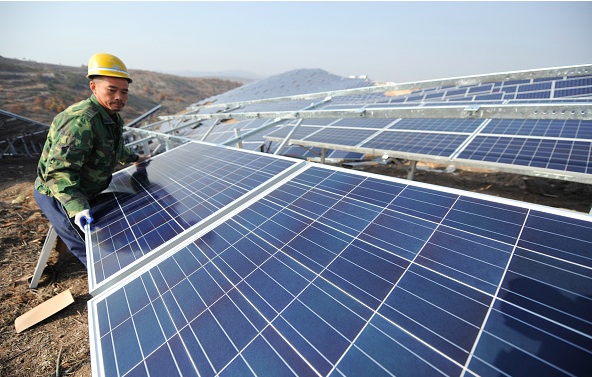By Anders Hove

On Thursday, China announced plans to establish two regional power trading exchanges as part of a larger effort to liberalize electricity prices, which are currently set by the government. Though many of the details—such as what types of customers or generators will participate—remain to be worked out, the exchanges will enable customers to purchase electricity from generators at competitive prices.
So why is this potentially good news for the renewable sector?
Power sector reform is critical to using more of the renewable energy that China already produces, and to operating the country’s vast coal fleet more efficiently. A recent Paulson Institute paper notes that China’s present power sector structure generally prioritizes coal plants over renewable energy because the system grants these plants a fixed number of operating hours to recoup their capital expenditures.
As a result, though China is producing a record amount of solar and wind energy, a significant percent of this electricity is curtailed—in other words, wasted—by the grid company: In the first six months of 2015, 15% of the country’s wind energy was wasted in this way. Even provinces with severe pollution problems, such as Beijing’s neighboring province of Hebei, waste almost 10% of their wind energy.
Market-oriented power sector reforms in China could help resolve the curtailment problem by giving grid companies and customers more economic incentives to use renewable energy over coal. Doing so increases overall efficiency in the system, and is also critical to resolving China’s air quality problems.
Power trading exchanges could play an important role in this reform, by making electricity prices more competitive and creating the right market conditions for increased renewable energy development and deployment. Power trading exchanges can take many forms. For example, in the U.S., a number of regions operate day-ahead and hourly wholesale power markets, which set the price of power every hour, thus prioritizing power sources with the lowest operating costs. In such markets, renewable energy like wind, solar and hydro will almost always be more affordable (or even free) options as compared to traditional sources like coal and natural gas. That is because while renewable energy can be expensive to install, once it has been built, its operating cost is essentially zero. No one has to pay the sun to shine or the wind to blow.
Power exchanges can also be a mechanism to establish longer-term contracts (beyond just the hour-by-hour pricing markets) with renewable energy providers. For example, in China’s Document #9 on Deepening Reform in the Power Sector, released by the State Council and the National Development and Reform Commission in March 2015, the Chinese government envisioned the potential for direct power trading between generators and customers (such as large industrial users)—recognizing that these interactions must be designed carefully to prevent the emergence of a two-track system that would put smaller customers at a disadvantage.
China Southern Grid, an SOE power company that covers about 20% of China’s electricity load, offers an encouraging sign that reform can work: for several years the grid company has been practicing energy-efficient dispatch of coal and prioritization of renewable energy, and reports success both at boosting clean energy and incentivizing coal plant efficiency. Partly as a result, the provinces of Guizhou and Guangdong are taking the lead on implementing power markets.
What China’s power sector needs is gradual, fundamental reform. Gradually shifting incentives around grid company and generation company revenue is essential to cleaning up the sector’s emissions and improving the use of renewable energy. Beijing is a good place to start: A Greenpeace report showed new coal plants are still under construction in the Northeast region this year despite a cap on coal and an urgent need to increase renewable energy use. If designed and implemented effectively, the new power trading exchanges can be an important step toward providing incentives for use of renewable energy.


